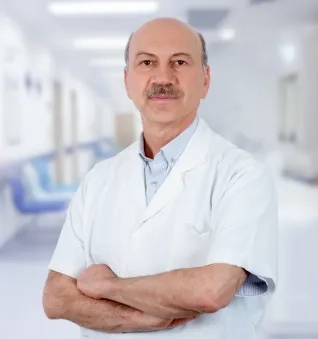Alo Yeditepe
Alo Yeditepe
Frequently Asked Questions in Hematopoietic Stem Cell / Bone Marrow Transplantation
How Long Does Hematopoietic Stem Cell/Bone Marrow Transplant Take?
Before the transplantation, the type and stage of the disease, performance of the patient are evaluated and preliminary preparations are put through. 8-10 days prior the transplantation, the patient receives high-dose chemotherapy and/or total body irradiation (TBI) protocol called ‘preparative or conditioning regimen’. Hematopoietic stem cell transplant is not a surgical procedure. The hematopoietic stem cell is collected from one of the sources; bone marrow, peripheral blood or umbilical cord blood and transferred to the patient through vascular access after the conditioning regimen. The ‘bone marrow engraft ment’ occurs when the transplanted donor stem cells that settle in the bone marrow begin to grow and start to reproduce healthy blood cells. This process takes 2 weeks on average, but may be shorter or longer. If there is no complication after bone marrow engraftment, the patient is discharged in 4 weeks. If there is any complication, patient’s stay in the hospital can be extended.
Are There Any Risks in Bone Marrow Donation?
The donor is selected among healthy people. The donor goes through multi ple tests before transplantation and is evaluated based on the stem cell collection process. It is an obligation of the apheresis team to inform the donor on every step of the process and possible outcomes on donor’s physical experience such as having bone pain during the preparation phase for peripheral blood collection. None of these risks is at such a level to compensate saving a human’s life. After bone marrow and peripheral blood stem cell collection, the donor's healthy bone marrow produces new cells for recover..
How is the Bone Marrow Collected from the Donor?
If bone marrow is preferred as the stem cell source of transplantation, the cell collection is performed in the operating room under general or epidural anesthesia. Whereas, if the stem cells are to be derived from the peripheral blood, the donor is connected to a device for collection.The umbilical cord blood unit is a ready to use stem cellsource as it is collected at birth and stored under appropriate conditions.
Who is Eligible to be a Volunteer for Hematopoietic Stem Cell Donor?
Anyone between the ages of 18 - 55 having a body weight of >=50 kg and in good health conditions is eligible to be a donor.
Related donor:
a. Sibling: The HLA- identical sibling is considered an optimal donor,
b. Related: In societies with frequent consanguineous marriage, there is high probability to find an HLA-identical relative as a donor.
Unrelated donor (volunteers):
Patients who do not have a suitable donor in the family may find an unrelated donor in Turkey National Donor Registry and The World Bone Marrow Donor Registry (BMDW). In both institutions, the records of HLA phenotypes of volunteer stem cell donors and cord blood units are monitored and when a match donor is found, transplantation is performed.
What are the Factors Affecting the Outcome of HSC Transplantation
Multiple factors such as the disease itself, the stage of the disease at the time of transplantation, patient’s general condition before the transplantation, degree of patient-donor HLA compatibility, type of transplantation, gender and the age of the donor. In general, early syage disease at time of transplant, good clinical conditions of the patient, close HLA matching and a young donor-pa tient may have positive impact on the outcome of HCS transplantation.
This content was prepared by Yeditepe University Hospitals Medical Editorial Board.
”
See Also
- Childhood Cancers and Treatment
- Childhood Lymphoma Treatments Give Hope!
- Father Who Lost His Daughter to Leukemia Saved a Life Through Stem Cell Donation
- He Beat Leukemia, Made A Graduation Ceremony in His Hospital Room, and Won the University
- Good Results have been Achieved in Leukemia Treatment
- Soil Eating in Patients with Pica Syndrome
- Guidelines for Safe Living After Hematopoietic Stem Cell Transplantation
- What are Hematopoietic Stem Cells and What is Their Function?
- How to Apply for Bone Marrow Transplantation?
Alo Yeditepe



